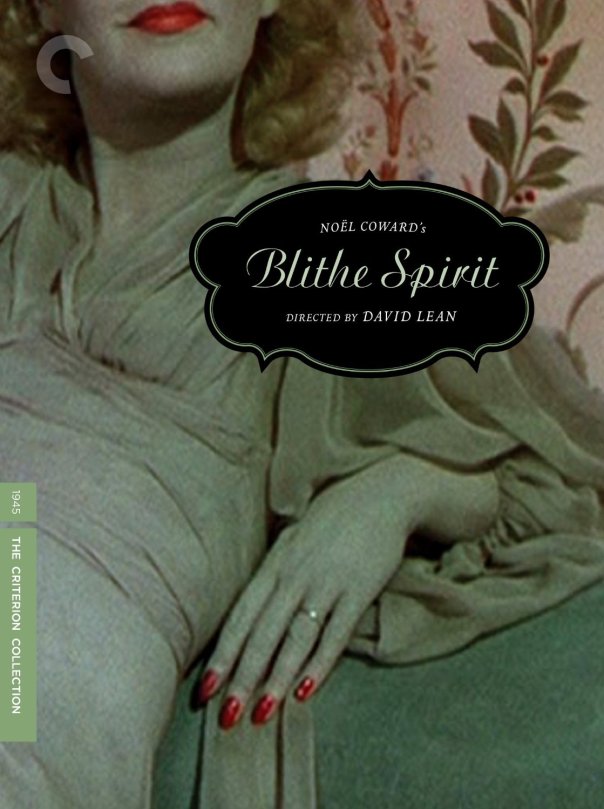BLITHE SPIRIT, DAVID LEAN, 1945
Blithe Spirit can easily be dismissed as one of the lesser of the Lean/Coward collaborations, or the inferior of Lean’s two comedies, or the mediocre movie that Lean got out of the way before focusing on arguably his finest masterpiece, Brief Encounter. All of these statements are true to an extent. This is a light, mediocre effort, yet it is engaging and at times pleasurable despite its flaws.
Lost in the comedic ghost story is a great deal of class-consciousness and their virtues, or lack thereof. Charles Condomine states early on that “it’s discouraging to think how many people are shocked by honesty and how few by deceit.” His current wife, Ruth, is shocked by his later honesty, even though she claims that she would not be offended by his calling his dead wife Elvira more attractive. Both Condomines act under the auspices of honesty, but in fact, there is a deceit going on that will be uncovered later.
Madame Arcanti is a lower class medium who travels by bicycle to the Condomines to reach out to the dead for them. She is excited by having some interest in her gift, but she is the object of their upper class ridicule. As it turns out, this is a clever deceit, as they believe none of it, and are merely using her to witness her methods for Condomine to write a mystery book later. Unlike her hosts, Arcanti is completely honest. She even states in a later scene that “honesty is the best policy.” After the ghosts are brought back into the world, she is fascinated by her abilities coming true, yet is clear about her limitations. She is helpless as to how to get them to leave. A lot of unsuccessful trial and error ensues.
Much of the comedy has to do with Arcanti bumbling around during her séances, and later when Charles’ ex-wife appears to his eyes and ears only, and he tries to talk to both her and his wife Ruth at the same time. His current wife is easy to offend, shocked by his honesty, even if it is directed at his dead wife and not her.
Kay Hammond is a delight as Elvira, and her capricious bantering with Charles is when the film is at its most enjoyable, especially since his responses end up with him inadvertently insulting his wife. Elvira relishes in Ruth’s reactions, pulling the strings to drive the couple apart.
Ruth comes off worse as the film progresses, and she seems to represent the worst of her upper class upbringing. She maligns Elvira, referring to her as not having the “slightest sign of breeding.” She does not get along with Arcanti either when she recruits the medium for a solution, and insults the poor woman’s credibility. She proves to be a poor wife to Charles, and the deceit is that she has his best interests in mind. She is thinking of herself only, and the only way to rectify her situation is to rid the living world of Elvira.
Elvira is a unabashed liar, lout, and rarely gives anything but a flippant response to anything Ruth or Arcanti says. She is the spirit that is being described as blithe, which is defined as “showing a casual and cheerful indifference considered to be callous or improper.” Over time, she wears out her welcome to Charles as well, and she admits that even during their marriage, she was unfaithful. She is the queen of deception and the antithesis of honesty.
Despite being occasionally charming, Blithe Spirit can be plodding and tiresome. It is a good thing that Lean made Hobson’s Choice later to prove that he had a comedic voice, although it is unfair to compare Charles Laughton with Rex Harrison on any level. This was a spirited attempt, but more of a stepping stone on the way to better things for Lean’s career.
Film Rating: 5.5
Supplements:
Interview with David Lean scholar Barry Day: Day was also not altogether thrilled with the film, although I don’t necessarily agree with all of his criticisms. He thought that Kay Hammond as Elvira was a problem because she was not as physically attractive on screen as Constance Cummings. Perhaps this is true on a physical role without being made up for the roles, but attraction is not always derived from looks. Her Elvira, however unscrupulous, was more desirable than the square-pegged Ruth. Day concludes that the film is “not bad, but not as good as it could have been.”
The Southbank Show on Noel Coward: This gem of a TV documentary is better than the actual feature, in my opinion. It is a life retrospective of Coward, from his upbringing to his death, and finally to his legacy. Some of the best parts were archived versions of him singing his songs, something I had never seen before. They go on through his plays, the failures and the successes, show him as an actor, and discuss his closeted homosexual personal life. He was unquestionably an interesting and talented man and this was a worthy portrait of him. As for his legacy, one of his later quotes are that he “was not all that keen on being significant.” He may not have been keen on it, but the works stands on their own as being extremely significant.
Criterion Rating: 6/10







 Reply With Quote
Reply With Quote

















 forum
forum